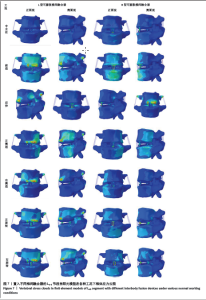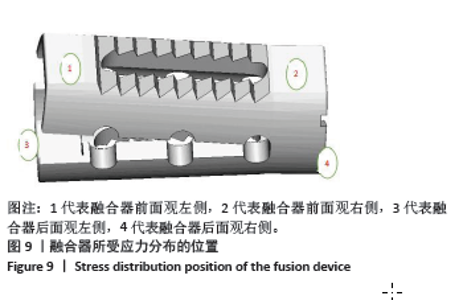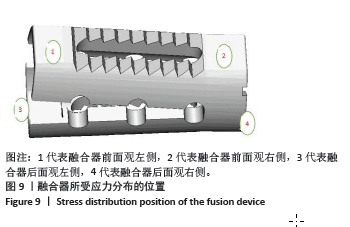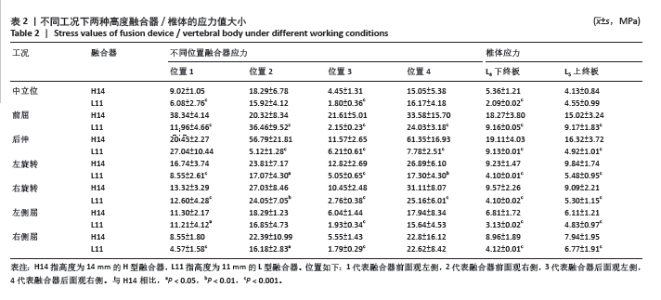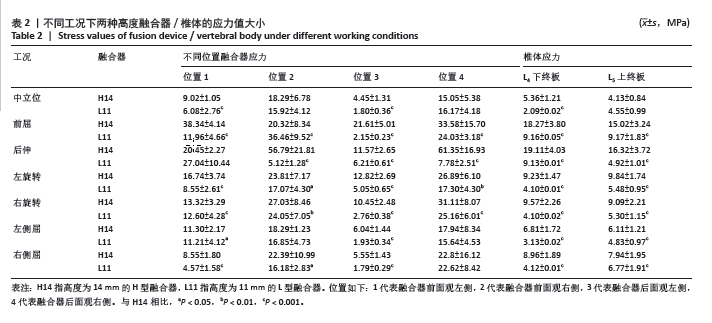[1] AHN Y, KIM CH, LEE JH, et al. Radiation exposure to the surgeon during percutaneous endoscopic lumbar discectomy: a prospective study. Spine. 2013;38(7):617-625.
[2] TIAN W, LV Y, LIU Y, et al. The high prevalence of symptomatic degenerative lumbar osteoarthritis in Chinese adults: a population-based study. Spine. 2014;39(16):1301-1310.
[3] 于海江,祝斌,刘晓光.青少年腰椎间盘突出症的研究进展[J].中国微创外科杂志,2021,21(1):73-76.
[4] QI L, LUO L, MENG X, et al. Risk factors for lumbar disc herniation in adolescents and young adults: A case–control study. Front Surg. 2023;9:1009568.
[5] DIVI SN, GOYAL DKC, GALETTA MS, et al. How does body mass index influence outcomes in patients after lumbar fusion? Spine. 2020;45(8): 555-561.
[6] SAMANTA A, LUFKIN T, KRAUS P. Intervertebral disc degeneration—Current therapeutic options and challenges. Front Public Health. 2023; 11:1156749.
[7] ONYEMAECHI NOC, ANYANWU GE, OBIKILI EN, et al. Impact of overweight and obesity on the musculoskeletal system using lumbosacral angles. Patient Prefer Adherence. 2016;10:291-296.
[8] RODRÍGUEZ-MARTÍNEZ E, NAVA-RUIZ C, ESCAMILLA-CHIMAL E, et al. The effect of chronic ozone exposure on the activation of endoplasmic reticulum stress and apoptosis in rat hippocampus. Front Aging Neurosci. 2016;8:245.
[9] DE KUNDER SL, RIJKERS K, CAELERS IJMH, et al. Lumbar interbody fusion: a historical overview and a future perspective. Spine. 2018; 43(16):1161-1168.
[10] HONGLI W, WENJIE C, JIANYUAN J, et al. Analysis of the correlative factors in the selection of interbody fusion cage height in transforaminal lumbar interbody fusion. BMC Musculoskelet Disord. 2016:17:9.
[11] MOBBS RJ, PHAN K, MALHAM G, et al. Lumbar interbody fusion: techniques, indications and comparison of interbody fusion options including PLIF, TLIF, MI-TLIF, OLIF/ATP, LLIF and ALIF. J Spine Surg. 2015; 1(1):2-18.
[12] XU DS, WALKER CT, GODZIK J, et al. Minimally invasive anterior, lateral, and oblique lumbar interbody fusion: a literature review. Anna Transl Med. 2018;6(6):104.
[13] ATTENELLO J, CHANG C, LEE YP, et al. Comparison of lateral lumbar interbody fusion (LLIF) with open versus percutaneous screw fixation for adult degenerative scoliosis. J Orthop. 2018;15(2):486-489.
[14] YUTAKA K, HOGAKU G, YOSHIO S, et al. Comparison of Clinical and Radiologic Results of Mini-Open Transforaminal Lumbar Interbody Fusion and Extreme Lateral Interbody Fusion Indirect Decompression for Degenerative Lumbar Spondylolisthesis. Asian Spine J. 2018;12(2): 356-364.
[15] LEE SB, YOON J, PARK SJ, et al. Expandable Cages for Lumbar Interbody Fusion: A Narrative Review. J Clin Med. 2024;13(10):2889.
[16] KIENLE A, KRIEGER A, WILLEMS K, et al. Resistance of coated polyetheretherketone lumbar interbody fusion cages against abrasion under simulated impaction into the disc space. J Appl Biomater Funct Mater. 2019;17(2):2280800018782854.
[17] ASSEM Y, MOBBS RJ, PELLETIER MH, et al. Radiological and clinical outcomes of novel Ti/PEEK combined spinal fusion cages: a systematic review and preclinical evaluation. Eur Spine J. 2017;26(3):593-605.
[18] MOBBS RJ, PHAN K, ASSEM Y, et al. Combination Ti/PEEK ALIF cage for anterior lumbar interbody fusion: early clinical and radiological results. J Clin Neurosci. 2016;34:94-99.
[19] 郑晓青,尹东,顾宏林,等.斜向腰椎融合中不同型号椎间融合器与椎体终板损伤的关系[J].中国组织工程研究,2019,23(34): 5418-5424.
[20] 朱媛君,莫中军,都承斐,等.椎间融合器高度对颈椎生物力学影响[J].医用生物力学,2017,32(3):220-226.
[21] 田伟,陈伯华,王岩,等.腰椎间盘突出症诊疗指南[J].中华骨科杂志,2020,40(8):477-487.
[22] 樊瑜波,王丽珍.骨肌系统生物力学建模与仿真[M].北京:人民卫生出版社,2018.
[23] 张童童,董恩纯,郑纪豹,等.3D打印高度可调聚醚醚酮颈椎椎间融合器的优化设计与评价[J].医用生物力学,2021,36(2):177-183.
[24] 张振军,廖振华,孙艺萄,等.腰椎椎间融合器及其在椎间融合术中的生物力学研究进展[J].医用生物力学,2018,33(5):465-470.
[25] LI X, SHE L, ZHANG W, et al. Biomechanics of extreme lateral interbody fusion with different internal fixation methods: a finite element analysis. BMC Musculoskelet Disord. 2022;23(1):134.
[26] YADAV D, GARG RK. Comparative Analysis of Mechanical Behavior of Femur Bone of Different Age and Sex Using FEA. Advances in Mechanical Engineering andTechnology, Springer, Singapore, 2022: 27-35.
[27] KHUYAGBAATAR B, KIM K, KIM YH. Recent developments in finite element analysis of the lumbar spine. Int J Prec Eng Manufact. 2024;25(2):487-496.
[28] 张景贺,窦永峰,许世东,等.有限元模拟单通道分体内镜下双侧腰椎管减压对腰椎生物力学的影响[J].中国组织工程研究, 2024,28(12):1849-1854.
[29] 陈柳旭,杨函,杨剑,等.椎间融合与双侧经椎弓根经椎间盘螺钉置入后腰椎生物力学的有限元分析[J].中国组织工程研究, 2024,28(12):1815-1822.
[30] WANG R, WU Z. Recent advancement in finite element analysis of spinal interbody cages: A review. Front Bioeng Biotechnol. 2023;11: 1041973.
[31] 徐铖菡,禚汉杰,柴旭斌,等.不同椎板切除回植术生物力学特性的三维有限元分析[J].中国脊柱脊髓杂志,2023,33(8):742-752.
[32] ZHANG W, ZHAO J, JIANG X, et al. Thoracic vertebra fixation with a novel screwplate system based on computed tomography imaging and finite element method. Comput Methods Programs Biomed. 2020;187:104990.
[33] SENGUL E, OZMEN R, YAMAN ME, et al. Influence of posterior pedicle screw fixation at L4–L5 level on biomechanics of the lumbar spine with and without fusion: a finite element method. Biomed Eng Online. 2021;20:1-19.
[34] 陈金田,孙武权.腰椎间盘突出症的生物力学特性及中医药治疗研究进展[J].中医临床研究,2023,15(4):110-113.
[35] 黄春柏,刘午阳,黄为民,等.腰椎融合器选择及临床应用[J].江西医药,2021,56(12):2107-2110+2115.
[36] 孟海,杨雍,孙天胜,等.腰椎后路手术椎间融合器应用的专家共识[J].中国脊柱脊髓杂志,2021,31(4):379-384.
[37] LE TV, BAAJ AA, DAKWAR E, et al. Subsidence of polyetheretherketone intervertebral cages in minimally invasive lateral retroperitoneal transpsoas lumbar interbody fusion. Spine. 2012;37(14): 1268-1273.
[38] FAIZAN A, GOEL VK, GARFIN SR, et al. Do design variations in the artificial disc influence cervical spine biomechanics? A finite element investigation. Eur Spine J. 2012;21(5):653-662.
[39] WANG L, WANG Y, SHI L, et al. Can the sheep model fully represent the human model for the functional evaluation of cervical interbody fusion cages? Biomech Model Mechanobiol. 2019;18(3):607-616.
[40] 任捷,吕智.3D打印个性化腰椎融合器设计及生物力学性能研究分析[J].中国骨伤,2021,34(8):764-769. |
